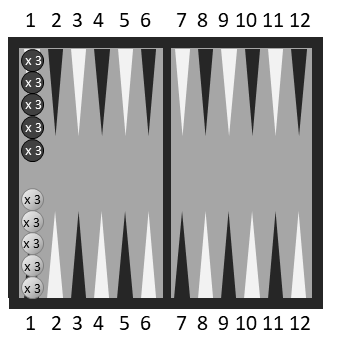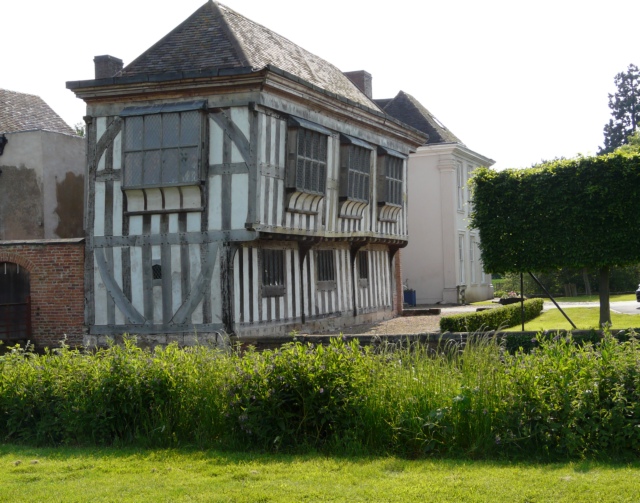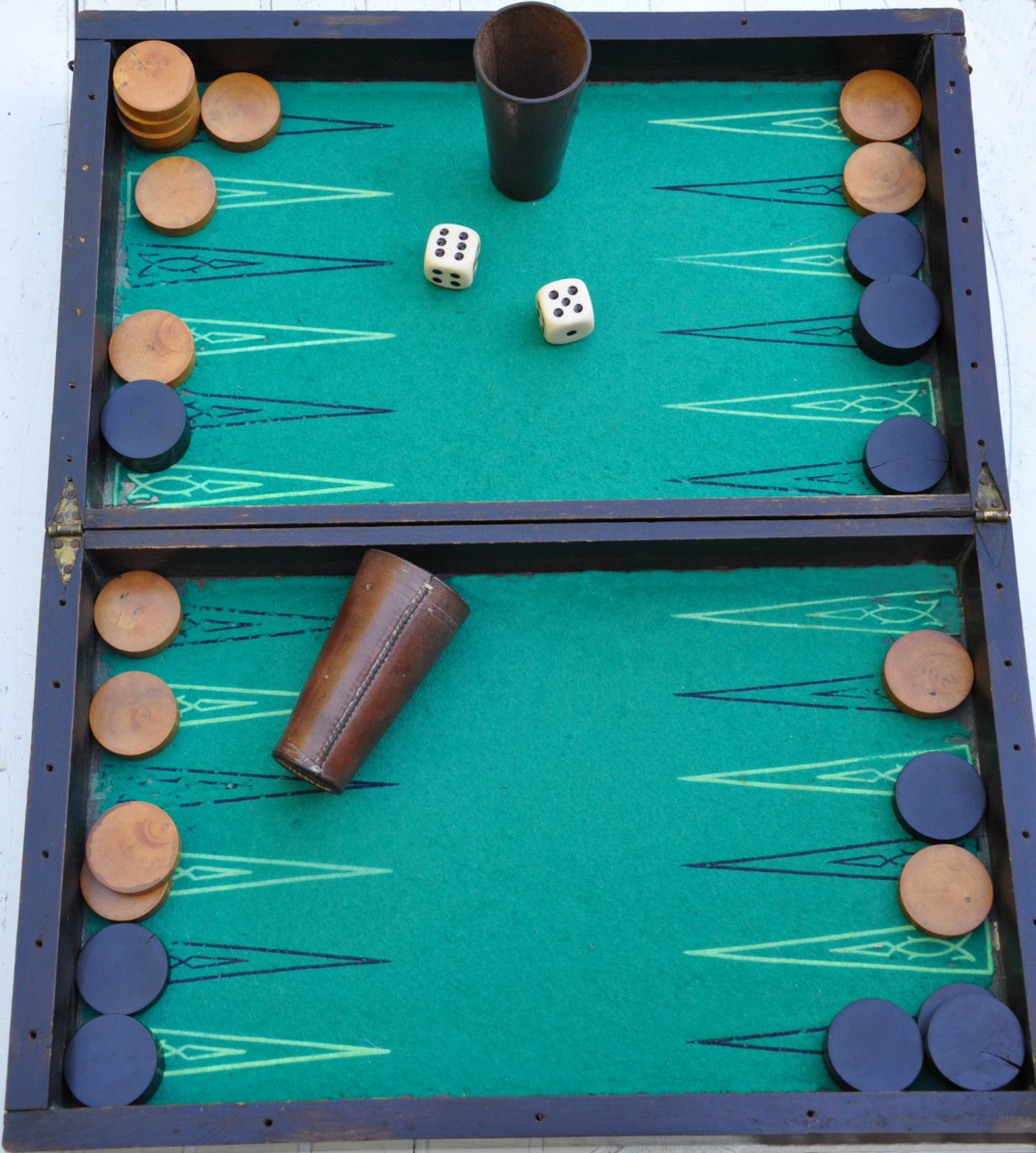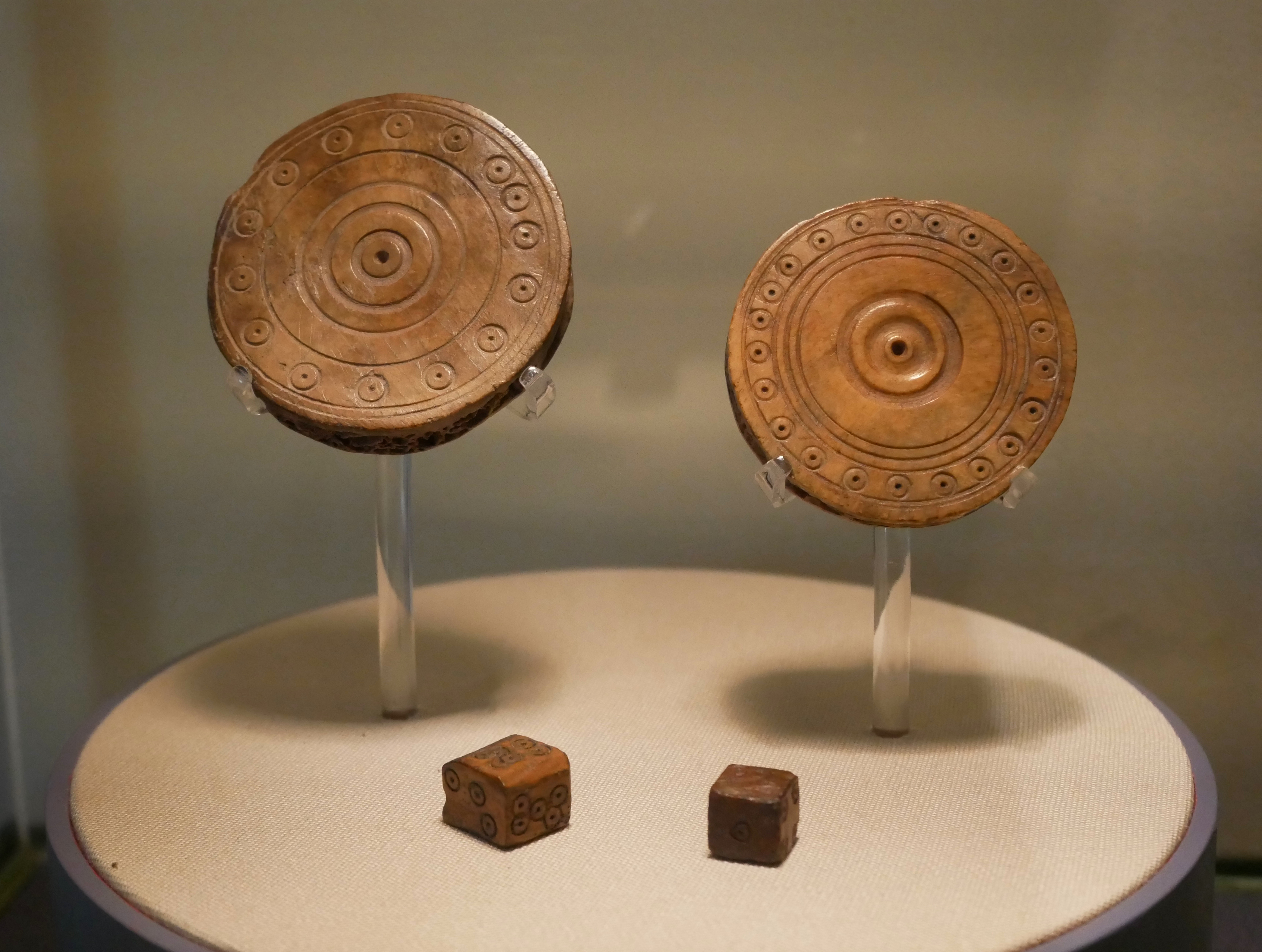|
Tick-tacke
Ticktack or Tick-Tack, is an historical English tables game for two players using a board similar to that used today for Backgammon and other tables games. Like its much more elaborate French counterpart, Trictrac, it has the unusual feature that there are several different ways in which it can be won, including ''Toots'' and ''Rovers''. History Ticktack is mentioned as early as 1586 as a game played by English country gentlemen in inclement weather along with three other games of the tables family: Lurch, Irish and Doublets. The earliest and only comprehensive set of rules appeared in 1672 by Willughby.Willughby (1666–1672), pp. 116 ff. However, Cotton gives an overview in '' The Compleat Gamester'' of 1674, an account which was reprinted until 1754, after which the game faded from view, being reported in Halliwell-Phillips (1881) as archaic.Halliwell-Philipps (1881), p. 873. Name Willughby says that the name Ticktack came from the rule that if a man is touched, it mu ... [...More Info...] [...Related Items...] OR: [Wikipedia] [Google] [Baidu] |
Mary Rose
The ''Mary Rose'' (launched 1511) is a carrack-type warship of the English Tudor navy of King Henry VIII. She served for 33 years in several wars against France, Scotland, and Brittany. After being substantially rebuilt in 1536, she saw her last action on 1545. She led the attack on the galleys of a French invasion fleet, but sank in the Solent, the strait north of the Isle of Wight. The wreck of the ''Mary Rose'' was located in 1971 and was raised on 11 October 1982 by the Mary Rose Trust in one of the most complex and expensive maritime salvage projects in history. The surviving section of the ship and thousands of recovered artefacts are of great value as a Tudor period time capsule. The excavation and raising of the ''Mary Rose'' was a milestone in the field of maritime archaeology, comparable in complexity and cost to the raising of the 17th-century Swedish warship '' Vasa'' in 1961. The ''Mary Rose'' site is designated under the Protection of Wrecks Act 1973 by statuto ... [...More Info...] [...Related Items...] OR: [Wikipedia] [Google] [Baidu] |
Francis Willughby
Francis Willughby (sometimes spelt Willoughby, la, Franciscus Willughbeius) FRS (22 November 1635 – 3 July 1672) was an English ornithologist and ichthyologist, and an early student of linguistics and games. He was born and raised at Middleton Hall, Warwickshire, the only son of an affluent country family. He was a student at Trinity College, Cambridge, where he was tutored by the mathematician and naturalist John Ray, who became a lifetime friend and colleague, and lived with Willughby after 1662 when Ray lost his livelihood through his refusal to sign the Act of Uniformity. Willughby was elected as a Fellow of the Royal Society in 1661, then aged 27. Willughby, Ray, and others such as John Wilkins were advocates of a new way of studying science, relying on observation and classification, rather than the received authority of Aristotle and the Bible. To this end, Willughby, Ray and their friends undertook a number of journeys to gather information and specimens, ini ... [...More Info...] [...Related Items...] OR: [Wikipedia] [Google] [Baidu] |
Historical Tables Games
History (derived ) is the systematic study and the documentation of the human activity. The time period of event before the invention of writing systems is considered prehistory. "History" is an umbrella term comprising past events as well as the memory, discovery, collection, organization, presentation, and interpretation of these events. Historians seek knowledge of the past using historical sources such as written documents, oral accounts, art and material artifacts, and ecological markers. History is not complete and still has debatable mysteries. History is also an academic discipline which uses narrative to describe, examine, question, and analyze past events, and investigate their patterns of cause and effect. Historians often debate which narrative best explains an event, as well as the significance of different causes and effects. Historians also debate the nature of history as an end in itself, as well as its usefulness to give perspective on the problems of the p ... [...More Info...] [...Related Items...] OR: [Wikipedia] [Google] [Baidu] |
Willughby, Francis
Francis Willughby (sometimes spelt Willoughby, la, Franciscus Willughbeius) FRS (22 November 1635 – 3 July 1672) was an English ornithologist and ichthyologist, and an early student of linguistics and games. He was born and raised at Middleton Hall, Warwickshire, the only son of an affluent country family. He was a student at Trinity College, Cambridge, where he was tutored by the mathematician and naturalist John Ray, who became a lifetime friend and colleague, and lived with Willughby after 1662 when Ray lost his livelihood through his refusal to sign the Act of Uniformity. Willughby was elected as a Fellow of the Royal Society in 1661, then aged 27. Willughby, Ray, and others such as John Wilkins were advocates of a new way of studying science, relying on observation and classification, rather than the received authority of Aristotle and the Bible. To this end, Willughby, Ray and their friends undertook a number of journeys to gather information and specimens, ... [...More Info...] [...Related Items...] OR: [Wikipedia] [Google] [Baidu] |
Francis Willughby's Book Of Games
''Francis Willughby's Book of Games'' is a book published in 2003 that printed for the first time a transcription of a seventeenth-century manuscript written by Francis Willughby that was held in the library of the University of Nottingham. The modern edition was edited by Jeffrey L Forgeng, Dorothy Johnston, and David Cram, and was published by Ashgate Publishing Company with . The manuscript was left incomplete when Willughby died at the age of 36, but even in its unfinished state it provides an unrivalled insight into the sports and games of his period. Among the features of the book include descriptions of card games that are otherwise only known from reference in literature. It also includes the first formal study of children's board games to be written in a European language; investigation of the original manuscript has revealed that some of the descriptions of children's games were actually written by an unknown child, with later corrections being made by Willughby. Card ... [...More Info...] [...Related Items...] OR: [Wikipedia] [Google] [Baidu] |
Bear Off
The following is a glossary of terms used in tables games, essentially games played on a Backgammon-type board. Terms in this glossary should not be game-specific (e.g. specific to a single game like Backgammon or Acey-deucey), but applicable to a range of tables games. A ; ace # A die roll of one. # The face of a die with one pip. (Historically, 2=''deuce'', 3=''trey'', 4=''quater'', 5=''cinc'', 6=''sice''; though these terms are now obsolete.Murray (1941), p. 59.Parlett (2018), p. 28.) ; ace point : The player's first point on the board. Also home point or one point. B ; bar : The central strip separating the left and right halves of the board, usually formed by the raised edges or rails of each half board. The raised partition of the board.Longacre (1980), pp. 129 ff. ; bear off : To remove one's men from the board in the final stages of a game. The first to do so usually wins the game; however, in Trictrac, it scores points but the game continues. Also throw ... [...More Info...] [...Related Items...] OR: [Wikipedia] [Google] [Baidu] |
Home Point
The following is a glossary of terms used in tables games, essentially games played on a Backgammon-type board. Terms in this glossary should not be game-specific (e.g. specific to a single game like Backgammon or Acey-deucey), but applicable to a range of tables games. A ; ace # A die roll of one. # The face of a die with one pip. (Historically, 2=''deuce'', 3=''trey'', 4=''quater'', 5=''cinc'', 6=''sice''; though these terms are now obsolete.Murray (1941), p. 59.Parlett (2018), p. 28.) ; ace point : The player's first point on the board. Also home point or one point. B ; bar : The central strip separating the left and right halves of the board, usually formed by the raised edges or rails of each half board. The raised partition of the board.Longacre (1980), pp. 129 ff. ; bear off : To remove one's men from the board in the final stages of a game. The first to do so usually wins the game; however, in Trictrac, it scores points but the game continues. Also throw of ... [...More Info...] [...Related Items...] OR: [Wikipedia] [Google] [Baidu] |
Ticktack Starting Layout
Ticktack or Tick-Tack, is an historical English tables game for two players using a board similar to that used today for Backgammon and other tables games. Like its much more elaborate French counterpart, Trictrac, it has the unusual feature that there are several different ways in which it can be won, including ''Toots'' and ''Rovers''. History Ticktack is mentioned as early as 1586 as a game played by English country gentlemen in inclement weather along with three other games of the tables family: Lurch, Irish and Doublets. The earliest and only comprehensive set of rules appeared in 1672 by Willughby.Willughby (1666–1672), pp. 116 ff. However, Cotton gives an overview in ''The Compleat Gamester'' of 1674, an account which was reprinted until 1754, after which the game faded from view, being reported in Halliwell-Phillips (1881) as archaic.Halliwell-Philipps (1881), p. 873. Name Willughby says that the name Ticktack came from the rule that if a man is touched, it must be ... [...More Info...] [...Related Items...] OR: [Wikipedia] [Google] [Baidu] |
Table (tables Game)
The following is a glossary of terms used in tables games, essentially games played on a Backgammon-type board. Terms in this glossary should not be game-specific (e.g. specific to a single game like Backgammon or Acey-deucey), but applicable to a range of tables games. A ; ace # A die roll of one. # The face of a die with one pip. (Historically, 2=''deuce'', 3=''trey'', 4=''quater'', 5=''cinc'', 6=''sice''; though these terms are now obsolete.Murray (1941), p. 59.Parlett (2018), p. 28.) ; ace point : The player's first point on the board. Also home point or one point. B ; bar : The central strip separating the left and right halves of the board, usually formed by the raised edges or rails of each half board. The raised partition of the board.Longacre (1980), pp. 129 ff. ; bear off : To remove one's men from the board in the final stages of a game. The first to do so usually wins the game; however, in Trictrac, it scores points but the game continues. Also th ... [...More Info...] [...Related Items...] OR: [Wikipedia] [Google] [Baidu] |
Point (tables Game)
The following is a glossary of terms used in tables games, essentially games played on a Backgammon-type board. Terms in this glossary should not be game-specific (e.g. specific to a single game like Backgammon or Acey-deucey), but applicable to a range of tables games. A ; ace # A die roll of one. # The face of a die with one pip. (Historically, 2=''deuce'', 3=''trey'', 4=''quater'', 5=''cinc'', 6=''sice''; though these terms are now obsolete.Murray (1941), p. 59.Parlett (2018), p. 28.) ; ace point : The player's first point on the board. Also home point or one point. B ; bar : The central strip separating the left and right halves of the board, usually formed by the raised edges or rails of each half board. The raised partition of the board.Longacre (1980), pp. 129 ff. ; bear off : To remove one's men from the board in the final stages of a game. The first to do so usually wins the game; however, in Trictrac, it scores points but the game continues. Also throw ... [...More Info...] [...Related Items...] OR: [Wikipedia] [Google] [Baidu] |
Tables Board
Tables games are a class of board game that includes backgammon and which are played on a tables board, typically with two rows of 12 vertical markings called points. Players roll dice to determine the movement of pieces. Tables games are among the oldest known board games, and many different varieties are played throughout the world. They are called 'tables' games because the boards consist of four quadrants or 'tables'. The vast majority are race games, the tables board representing a linear race track with start and finish points, the aim being to be first to the finish line, but the characteristic features that distinguish tables games from other race games are that they are two-player games using a large number of pieces, usually fifteen per player. Tables games should not be confused with table games which are casino gambling games like roulette or blackjack. Name The word 'tables' is derived from the Latin ''tabula'' which primarily meant 'board' or 'plank', but also ... [...More Info...] [...Related Items...] OR: [Wikipedia] [Google] [Baidu] |
Men (tables Game)
The following is a glossary of terms used in tables games, essentially games played on a Backgammon-type board. Terms in this glossary should not be game-specific (e.g. specific to a single game like Backgammon or Acey-deucey), but applicable to a range of tables games. A ; ace # A die roll of one. # The face of a die with one pip. (Historically, 2=''deuce'', 3=''trey'', 4=''quater'', 5=''cinc'', 6=''sice''; though these terms are now obsolete.Murray (1941), p. 59.Parlett (2018), p. 28.) ; ace point : The player's first point on the board. Also home point or one point. B ; bar : The central strip separating the left and right halves of the board, usually formed by the raised edges or rails of each half board. The raised partition of the board.Longacre (1980), pp. 129 ff. ; bear off : To remove one's men from the board in the final stages of a game. The first to do so usually wins the game; however, in Trictrac, it scores points but the game continues. Also throw of ... [...More Info...] [...Related Items...] OR: [Wikipedia] [Google] [Baidu] |


.jpg)




